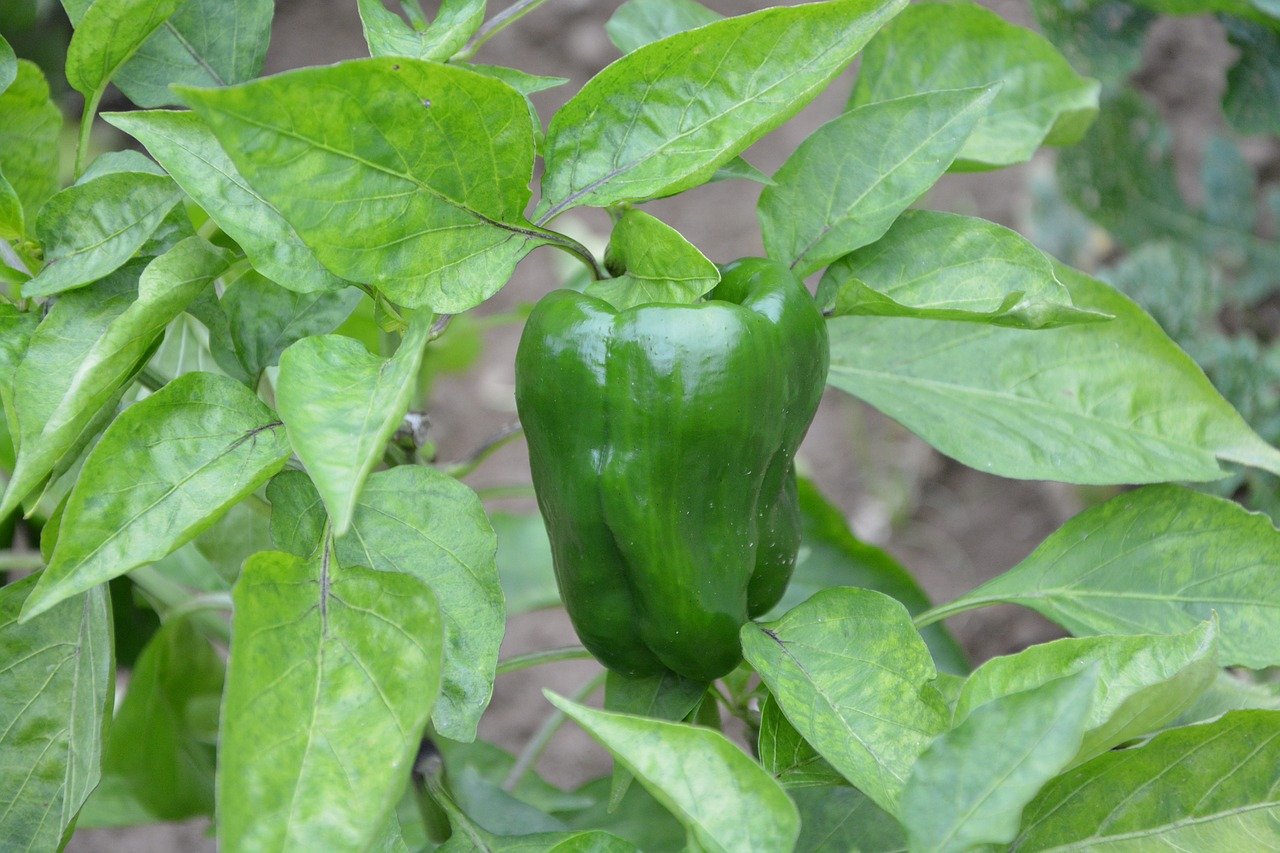Generally speaking, the leaves of pepper plants are edible, but they may not be all palatable. In addition, peppers come in various sizes and flavors, ranging from slight to tremendous, spicy to sweet, green to red to white. Therefore, it’s critical to recognize pepper plants, especially if you plan to eat them. Finally, the hotness or heat of different peppers is quantified on the Scoville scale, as chili peppers can be as mild as squash or as hot as summer.
Cherry and sweet bell peppers are among the mildest peppers; cayenne and Serrano peppers are medium-hot, and habanero and scotch bonnet peppers are pretty intense. Peppers are widely used in cooking and medicine, and they can be cultivated in practically any climate. Understanding the plant’s seeds, petals, flowers, calyx, and pedicels is necessary for identification.
When working with hot types, use gloves. Before touching your face, vigorously wash your hands with warm soap and water. Peppers come in many sizes and flavors, ranging from slight to huge, spicy to sweet, white to red to green. Therefore, it’s critical to recognize pepper plants, especially if you plan to eat them.
Take a look at the seeds on the plant. Dark seeds suggest that the species is C. pubescens, implying that the petals will be purple. Seeds that are in the yellow or tan range in color indicate a mild pepper species. Next, identify the plant’s petals, commonly known as the corolla. Next, the C. baccatum species is determined by light-colored dots on the petals. Finally, place the chile pepper plant’s blossoms. The presence of singular and solitary flowers indicates that the variety is a C. annuum.
It’s a C. Chinense variety if there are two or more flowers at the nodes. Next, locate the calyx of a pepper plant’s mature fruit. C. chinense peppers have a ring-like growth at the top of the pepper that connects to the stem. And finally, look at the flowers. The C. frutescens species is a pepper with flowers that bloom in groups of two or more. As demonstrated through the easy exercise, it is easy to identify the exact pepper plant cultivar, which should help you decide whether or not to eat the leaves or seeds of a particular pepper.
Are Bell Pepper Leaves Poisonous?
Bell pepper leaves are not poisonous, and they can be added to different recipes. If you are creative in the kitchen, you will surely use edible leaves with a very mild pepper flavor and no heat at all.
People who ask, “can you eat bell pepper leaves?” often don’t know that scraps of vegetables aren’t simply for the compost bin or soup broth. Discover how to use the entire plant from top to tail to go all-out waste reduction in the kitchen (and find unique new flavors and textures). You might be astonished at what you can eat from common vegetables that you already have or even produce yourself!
When we don’t know how to use the entire vegetable, we often wind up with quite pricey compost. It’s not that we’re picky or wasteful; we don’t recognize that most plants we cultivate or buy are edible from top to bottom. We don’t see them in grocery stores very often, and we nearly never see them in recipes, and we’ve written them off as bitter, complex, or toxic due to incorrect notions passed down through the generations. The leaves of sweet and hot pepper plants (Capsicum frutescens and Capsicum annuum, respectively) are edible and excellent.
They have a milder and sometimes sweeter flavor than pepper fruits. However, they have a gentle and aromatic flavor similar to white pepper. The chemical ingredient that gives these plants heat (capsaicin) is often concentrated in the inner membranes of the fruit. It won’t make a difference if you use the leaves from a scorching habanero or a sweet bell. Pepper leaves are commonly used in the Filipino soup tinola, but they’re also used in braises and stir-fries in Chinese cuisine.
Are Jalapeno Leaves Poisonous?
Jalapeno leaves are not poisonous and can be used in cooking.
Like other chili plants, you may now celebrate the fact that jalapeno leaves are, in fact, edible, and they can be used in a wide variety of recipes that will benefit from no heat but a ton of flavor.
Jalapeno leaves can be added to stir-fry recipes, soups, vegan broths, and other kitchen concoctions. If you are nervous about using this part of the chili pepper plant, don’t be. Pepper leaves behave much like any thin vegetable in the kitchen. For example, pepper leaves are excellent for chicken soup, and they carry the unique flavor of the pepper minus the burning heat of capsaicin. Like other vegetables, expect Jalapeno leaves also to have antioxidants and other vital nutrients.
Can You Cook With Green Pepper Leaves?
Yes, you can cook with green pepper leaves. Take the most common chili pepper cultivars in your region, and all of their leaves are edible. The essential question now is which one will provide the best flavor for your dish.
What Is Pepper Leaf Good For?
Pepper leaves can be added to salads, stews, soups, and stir-fry recipes. If you are acquainted with Eastern cooking, particularly the recipes in Eastern Asian and Southeast Asia, you know how specific recipes need herbs and spices to taste right. Chili pepper leaves are a perfect accompaniment to many recipes precisely because they are flavorful but lack the heat of the fruits of the pepper plant.

